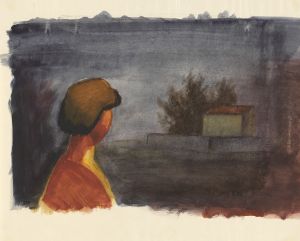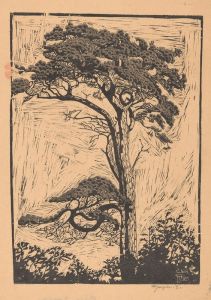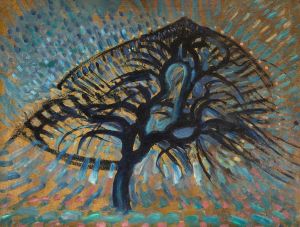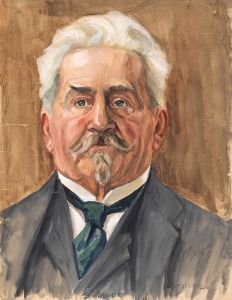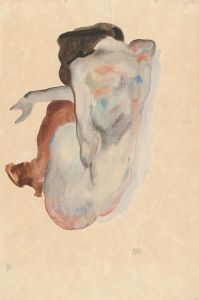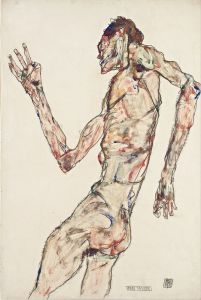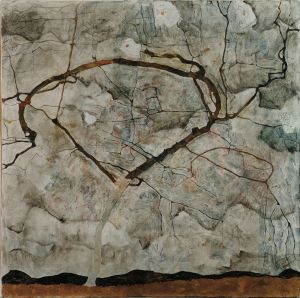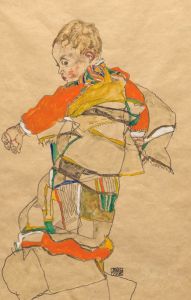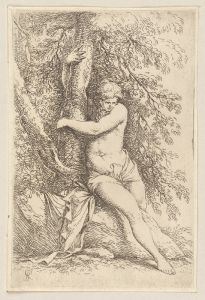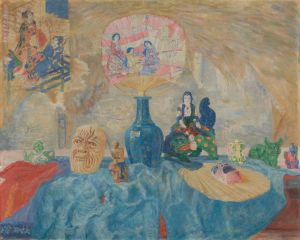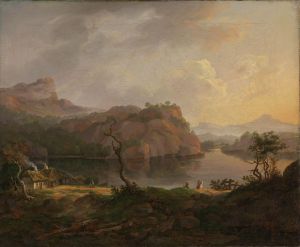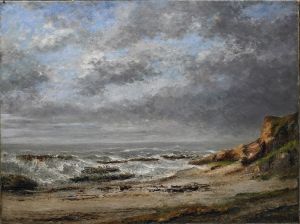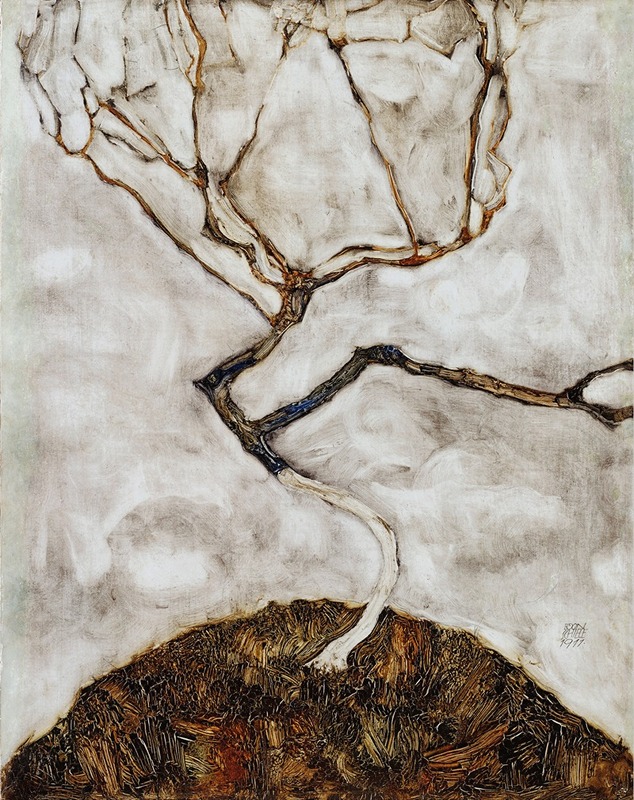
Small Tree in Late Autumn
A hand-painted replica of Egon Schiele’s masterpiece Small Tree in Late Autumn, meticulously crafted by professional artists to capture the true essence of the original. Each piece is created with museum-quality canvas and rare mineral pigments, carefully painted by experienced artists with delicate brushstrokes and rich, layered colors to perfectly recreate the texture of the original artwork. Unlike machine-printed reproductions, this hand-painted version brings the painting to life, infused with the artist’s emotions and skill in every stroke. Whether for personal collection or home decoration, it instantly elevates the artistic atmosphere of any space.
"Small Tree in Late Autumn" is a painting by the Austrian artist Egon Schiele, created in 1911. Schiele, a protégé of Gustav Klimt, is known for his distinctive style that often includes expressive lines and a bold use of color. His work is characterized by its intensity and raw emotional power, often exploring themes of sexuality, death, and the human form. However, in "Small Tree in Late Autumn," Schiele turns his attention to the natural world, capturing a solitary tree in a landscape setting.
The painting depicts a small, leafless tree set against a muted autumnal background. The tree's bare branches are rendered with Schiele's characteristic sharp, angular lines, which convey a sense of starkness and vulnerability. The background is composed of earthy tones, suggesting the subdued palette of late autumn. This work is notable for its simplicity and focus on the singular subject of the tree, which stands in contrast to Schiele's more complex figurative compositions.
"Small Tree in Late Autumn" reflects Schiele's interest in capturing the essence of his subjects, whether human or natural. The tree, stripped of its leaves, can be seen as a metaphor for the cycle of life and the passage of time, themes that are prevalent in Schiele's oeuvre. The painting's composition emphasizes the isolation of the tree, perhaps reflecting the artist's own feelings of alienation and introspection during this period of his life.
Egon Schiele was part of the early 20th-century Viennese art scene, a time of great innovation and change in the arts. He was associated with the Expressionist movement, which sought to convey emotional experience rather than physical reality. Schiele's work often pushed the boundaries of conventional aesthetics, and he was known for his willingness to explore controversial and taboo subjects.
In 1911, the year "Small Tree in Late Autumn" was painted, Schiele was living in Vienna and was beginning to gain recognition for his work. This period was marked by both personal and professional challenges, including financial difficulties and tensions with the conservative art establishment. Despite these challenges, Schiele continued to develop his unique artistic voice, and his work from this time is characterized by a deep exploration of existential themes.
"Small Tree in Late Autumn" is part of Schiele's broader body of work that includes landscapes, portraits, and figurative compositions. While he is perhaps best known for his provocative and often controversial depictions of the human body, his landscapes reveal another dimension of his artistic vision. These works demonstrate his ability to capture the essence of the natural world with the same intensity and emotional depth that he brought to his figurative work.
Today, Egon Schiele is regarded as one of the most important artists of the early 20th century, and his work continues to be celebrated for its emotional power and innovative approach to form and color. "Small Tree in Late Autumn" is a testament to Schiele's ability to find beauty and meaning in the simplicity of nature, and it remains an important example of his contribution to the Expressionist movement.





